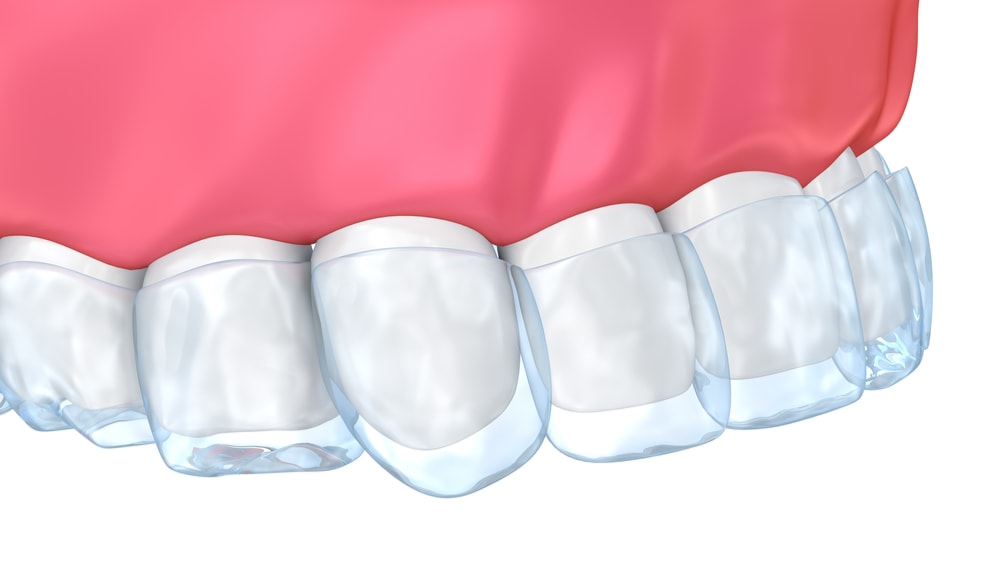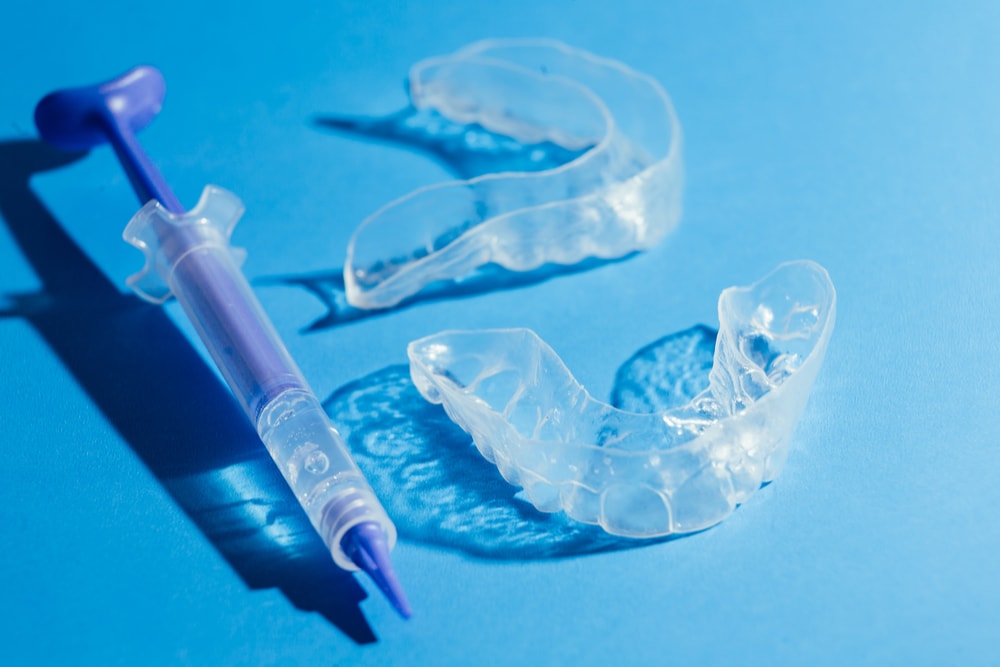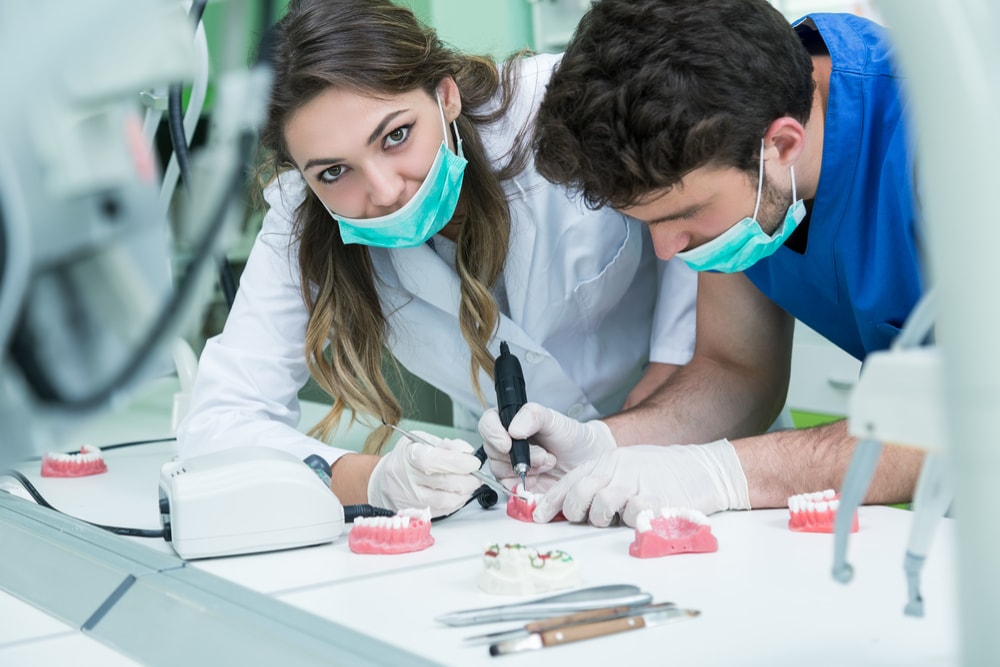Chapter 2: Whitening strips, toothpaste, paint-on films, and trays with gels
Introduction
You may have undergone a teeth-whitening procedure in a dental office.
Now you wish to maintain the results over time by doing something in the comfort of your own home.
Or you may be looking for a less pricey alternative than professional bleaching techniques.
Maybe you are simply curious.
Whatever your motivation, let us guide you through the different possibilities that exist outside the world of in-office dental procedures.
Starting with whitening strips that were introduced in the late eighties, all the way to
- gels,
- toothpastes,
- rinses,
- paint-on films …
you will see below, there is no shortage of choices!
To help you find your way among the numerous possibilities, we will focus on the more important ones.
We will explain how they work and highlight their pros and cons.
Just continue reading.
Which home teeth whitening products usually provide a bleaching action?
First things first.
Bleaching agents are important because they exfoliate or break stains (see also Chapter 4: Sensitivity and gums’ irritation after teeth whitening).
What role do they play here?
An important one, is the short answer.
You will find these agents present in many teeth whitening products.
Here are some examples:
- OTC gels with trays,
- gels with trays supplied by your dentist,
- paint-on films,
- and whitening strips.
Hence, all of these provide a bleaching action because of the presence of hydrogen peroxide or carbamide peroxide.
Let’s now look at how you can use them. We will start with paint-on films.
Usage of paint-on films.
Films are quite straightfoward
Here is a brief summary of the steps and of the way a film works:
- You should apply the peroxide-based bleaching gel on the teeth surface with a small brush.
- It then hardens and forms a coat covering the teeth and adhering to enamel.
- This film provides the whitening effect.
- After sometime the film dissolves and washes away.
Manufacturers advise twice daily application, during 14 days.
As for any other teeth-whitening procedure, it is preferable to consult a dental professional before deciding.
Let’s now investigate how gels on trays work.
How do you whiten your teeth with gels on trays?

Whitening trays (filled with gel) can be OTC or custom-made under your dentist’s supervision.
The latter approach makes use of higher concentration of bleaching agents.
As a result, if you are thinking you should handle gels with care, then your thinking is right.
And, your dentist is the one who should ideally choose the concentration best suited to your needs.
He can also prepare trays that ensure a perfect fit with your dental anatomy.
You can use trays between 2-4 hours over a few days.
Or, you can wear a tray during your sleep, 6-7 hours per night, for ten nights.
The length of treatment also depends on the extent of staining and desired lightening effect.
Next …
What are the advantages of custom-made teeth bleaching trays?
As mentioned above, they are custom made so that they perfectly fit your teeth and bite.
They are fabricated for home use under your dentist’s supervision.
How?
He will take impressions of your teeth.
After that, he will ask a laboratory to tailor-make the trays.
You will be able to fill this type of trays with a whitening gel without any risk of (the gel) leaking out.
Your gums will thus not get irritated.

The outcome will be:
- optimal results,
- and no irritation to your gums.
You can use these products in different ways:
- either as stand-alone home teeth-whitening procedures,
- or as custom-fitted trays, after the in-office dental procedure, to maintain the whitening results.
What about the disadvantages of custom-made teeth whitening trays?
Just scroll down.
What are the disadvantages and side effects of custom-made teeth whitening trays?
The only con is price.
But that is normal.
They cost more than OTC trays because they involve more work.
And you get that back in terms of product quality (better fit, less gum irritation, etc…).
So, price is the main disadvantage of a dentist-prescribed tray for your home-use.

As for their side effect, albeit less common, is that you may experience jaw pain or a sore throat.
These happen because of excessively long tray usage.
But you will experience them also with OTC trays.
Since we mentioned the OTC alternatives, let’s investigate a little.
What are the pros and cons of OTC teeth whitening trays?
The main pros are price and the fact that you can quickly order them.
Yes, there are no other advantages for OTC trays.
As for the main cons, you know by now that gel (to whiten your teeth) may leak out if there is a poor fit.
This is likely to happen because we all have different mouth and bite anatomies. And OTC products offer limited or sometimes no possibility of proper fit and molding.
As a result, your gums may get irritated.
And, don’t forget! OTC trays may also decrease the whitening effect because you lose part or most of the gel.
That is why the American Academy of Cosmetic Dentistry recommends using patient custom-fitted mouth trays.
It also advises that they are made under your dentist’s supervision.
Okay, enough with trays!
Let’s move on to another product often used to restore your smile: teeth-whitening strips.
How do you use teeth-whitening strips?
Before answering the question in the title, let me ask you another question: do you know what teeth-whitening strips are?
If not, let me explain.
These are thin, flexible plastic strips with a layer of hydrogen peroxide whitening gel.
They were created in the late eighties to avoid the use of trays and gel.
They are shaped to fit the surfaces of teeth.
You find kits sold with two different sets of strips:
- one will fit the anterior (buccal facing) lower teeth surfaces;
- the other, the anterior upper (buccal facing) teeth.
Many types, with different instructions, currently exist.
Now let’s go back to the question asked in the title. In practice, how do you use strips? … and I would also add: how do they work?
Well, you need to gently press them across the teeth.
The gel layer should make good contact with the teeth’s surface.
Hydrogen peroxide in the gel will release oxygen during the bonding process with your teeth’s surface.
And the oxygen should wreak havoc among your stains.
That’s it.
By the way, hydrogen peroxide’s concentrations are low, in the order 5 to 14%. And that’s because it is a product intended for home use.
If you are considering testing this product, check the next section to help you with your choice.
Which are the best whitening strips?
Bold question? Can any product be considered the best?
As for whitening strips, it probably can.
Why?
Because, the only whitening strips to have received the ADA seal of acceptance are the Crest 3D White Whitestrips (Glamorous White).
They are also the only OTC bleaching product to have received this seal.
You should be aware that preparing all the safety and efficacy data for submission to the ADA involves a lot of work. Many manufacturers simply decide to avoid it. But it does not mean that their products would not meet the ADA standards (if they were to submit all the data).
Now, let’s move over to another product on the list: whitening toothpastes.
How does whitening toothpaste work?
It removes difficult surface stains.
But, as for deeper stains
……. it does not affect them, unfortunately.

The best way to use toothpaste, is to keep the slurry that forms over your teeth for 5 minutes (after brushing).
Are you curious to know how it works?
If so, here is a brief explanation of the mechanism of action of whitening toothpastes:
- They may rely on enzymes, although these are not always present. Enzymes are molecules that work like scissors and break down organic molecules in the biofilm (on teeth).
- They depend on large quantities of abrasive compounds. These eliminate surface stains from teeth surfaces. They include alumina, dicalcium phosphate dihydrate, and silica.
- They contain detergents.
- They may make use of small quantities of bleaching agents like hydrogen peroxide or carbamide peroxide. But these are usually not present.
One word of caution is necessary.
The quantities of abrasive compounds need to be calibrated to avoid the thinning of the enamel.
If that were to happen, not only would your teeth get weaker, but they would also get darker.
Why?
The explanation comes from the naturally yellow dentin becoming more and more visible (through a thinner enamel).
Let’s now briefly talk about one last product … whitening rinses.
How to use whitening mouthwashes or rinses
Last but not least come whitening washes or rinses.
There is nothing much to say other than that:
- They contain bleaching agents like hydrogen peroxide, which react with stains.
- Manufacturers advise rinsing for 60 seconds, twice a day.
Their use is very simple: you only have to swish the product around in your mouth.
Final remarks
We hope you have found the article engaging.
If you have read this guide from the start, then:
- you have seen how in-office dental teeth whitening is done, in Chapter 1,
- and also how whitening strips, toothpaste, paint-on films, and trays with gels are used (in this Chapter 2).
You must probably be impatient to find out how well each of these methods works (?)
In other words, what results will you get with each technique or product?
And moreover, how long will these (results) last?
So, without further ado, let’s head over to Chapter 3: Teeth whitening results.
And remember … after Chapter 3, make sure you check:
- Chapter 4: Sensitivity and gums’ irritation after teeth whitening
- Chapter 5: Natural methods to preserve or whiten your teeth
(and also Teeth Whitening: The Definitive Guide in case you have not read it yet).
SUTTON PLACE DENTAL ASSOCIATES ON THE WEB






